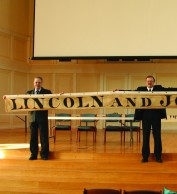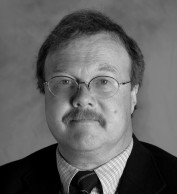STILLPOINT Archive: last updated 03/20/2009
In March of 2008 I received a call from Cliff Hersey, director of global education at Gordon, concerning a problem with the archives at Second Church (Congregational) of Dorchester, Massachusetts. Cliff knew I was involved with the creation of an archival database at the estate of General George S. Patton as a part of the new Public History Institute at Gordon. He wondered what might be done to organize a similar collection of materials in Dorchester. I agreed to visit the church and give him an assessment. It would prove to be an incredible learning experience for us both.
The impressive, though somewhat neglected, early 19th-century edifice known as Second Church was the famous church presided over for many years by the equally famous Reverend John Codman, perhaps Boston’s most notable evangelical minister of the 19th century. It had, during the previous decade, finally closed its doors and by a vote of the few surviving members been given to the Church of the Nazarene. Through Cliff’s involvement with that organization, the building had recently become the headquarters of the Gordon in Boston program as well as serving as a place of worship for several ethnic congregations.
Cliff took me on a grand tour of the labyrinthine interior, concluding with a large parlor in the c. 1840 rear addition behind two massive sliding doors. Within this 40- by 20-foot room was a staggering array of largely unrecorded material culture and historical ephemera. Scattered upon the floor, covering several large tables, filling massive bookcases, piled high, bundled, boxed and balanced everywhere were thousands of church records and various religious documents, books, journals, diaries, ledgers, flags, maps, pamphlets, prints, paintings and artifacts of every description.
Cliff smiled as I took in the sheer variety and volume of this assortment of old stuff. “We have to make sense of this,” he said. And I surveyed it all in wonder, remarking that it was certainly possible but would require time, effort and a team of the right people. I agreed to help recruit that team and to help manage the project.
By April things had improved. Cliff was committed to being involved and immediately began construction of a much-needed, new inner-city classroom facility featuring a secure, archival storage area. One of my museum studies students, Brian Schober ’12, was planning to spend the summer in Dorchester as part of the inner-city program, and he volunteered to assist. From Gordon’s library staff, Martha Crain offered her considerable professional skills. The church secretary, Olive Knight, offered to help identify church-related materials as did David Tierney, a former member of Second Church. The final and key team member, Carol Mori, a former chairperson of the Beverly Archival Program and archivist of Dane Street Congregational Church in Beverly, agreed to lead a training session and help oversee the organization of the collection and its storage.
By the start of May semester, as I was about to teach my course on cemetery studies at Second Church, the team had already emptied the room of the materials. Most were inventoried and placed in labeled, acid-free boxes on shelves in the newly created archival storage. The development of an archival database would need to wait until September, but an interesting collection of items was discovered in the process.
Among the many 18th- and early 19th-century books were titles from Rev. Codman’s personal library as well as sermon notes and letters in his own handwriting. We discovered a number of Civil War-era relics including a handpainted, wooden grave marker brought back from Virginia by Dorchester soldiers bearing the faded photograph of their young commanding officer--later buried in nearby Codman Cemetery. Among many maps we found a large, hand-drawn diagram showing the original seating plan and names of pew holders and annual prices they paid for their seats. Most exciting was the discovery of two 20-foot, muslin, political campaign banners. The first bore the names of Grant and Colfax, the successful Republican candidates for president and vice president in 1868. The second was a similar banner bearing the names of Lincoln and Johnson, elected in the 1864 campaign. Attached notes explained that both banners had been flown in front of Second Church.
The first public display developed out of the archive collection was “Second Church and the Civil War.” The display opened at the church on February 6, 2009, followed by a special bicentennial Lincoln birthday party gathering for the community on February 12. The display tells the story of the 54 members of Second Church in Dorchester who served in the Civil War--15 who gave the ultimate sacrifice.
On the following day, Friday, February 13, the Lincoln banner traveled to the Salem Old Town Hall, where Gordon’s Institute for Public History hosted an afternoon open house and an evening invitation-only Lincoln bicentennial gathering. The event featured period music and dance, an appearance by “President Lincoln” in the guise of John Sarrouf, costumed members of the Civil War Club, a color guard, speeches and lots of fun.
For the Second Church archives, this is only the first phase of a multiyear archival process. With Carol Mori and Cliff Hersey continuing to drive the project through the next academic year, the final result will be a well-organized and significant collection of previously unknown materials ready to be used by researchers to help tell the story of Boston, Massachusetts, and in particular the community of Dorchester.
David Goss, M.A., assistant professor of history, and codirector of the Gordon Institute for Public History, teaches museum studies, public history, and early American maritime and intellectual history. His book Salem Witchcraft Trials was published this year by Greenwood Press (New York). A new book, Daily Life during the Salem Witch Trials, is forthcoming.
[email protected]

